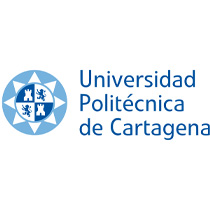
Enhancing the ecosystem health of the Mar Menor requires effective actions. Hence, it is required a high resolution forecast system that encloses the whole water balance (i.e. the basin, the quaternary aquifer and the lagoon). This system, promoted by IMIDA, will allow to assess "a priori" the impacts of these actions, leading to an integral and feasible management.
The Client
Instituto Murciano de Investigación y Desarrollo Agrario y Medioambiental, [IMIDA, Spain] (Coordinator entity of the Mar Menor Observatory) - Context: European Regional Development Fund.
The Challenge
The aim of this project was to provide support to IMIDA in the coordination of a new multi-model water balance forecasting system for the Mar Menor, a saltwater lagoon at the South-East of Spain.
Mar Menor is heavily affected by the joint action of intensive agriculture and flash floods that drive high concentrations of nutrients (nitrates and phosphorous) to the lagoon, unleashing episodic eutrophication and anoxia events that severely impacts on existing biota. This new multi-model service promoted by the IMIDA will contribute to the forecasting and monitoring of the lagoon ecosystem health.
The Results
The forecasting system includes the following modules: (i) an atmospheric model (HARMONIE-AEMET at 2.5 km resolution); (ii) two surface hydrological models (SWAT and TETIS), together with (iii) a groundwater module (SUTRA) to simulate freshwater contributions from the quaternary aquifer and finally (iv) two coastal circulation models of the Mar Menor lagoon (based on ROMS and SHYFEM) that includes the three channels connecting Mar Menor with the Mediterranean Sea.
The modules are off-line coupled: NOW has coordinated exchanges betwen the different models involved, implementing specific routines to process required inputs/outputs for each module, and ensuring consistency among them. For instance, the surface hydrology models provide inputs for subsequent ones in the forecasting chain: (i) percolation estimates for the quaternary aquifer and (ii) surface run-off for the coastal circulation module.
Coherent and integral Database: It has been built a database that includes simulations from all the models in the forecasting chain. This database covers the last two years (2020-22). An additional long-run simulation (spanning from 2014 to the present) has been conducted with the hydrological models (surface and groundwater); mainly due to their intrinsic physics and low computational-cost.
From models to products: NOW has proposed a postprocessing strategy for generating operational products from raw model outputs. The combined products, including hidrological, ocean and atmospheric data, will be in a format that will ease service delivery and further data exploitation.
Stepping stone towards an Operational Platform (from products to services): This forecast system can be integrated in a Operational Service with added-value services (e.g. early-warning system, indicators, what-if scenarios) and highly customizable User-Interfaces, as the ones developed by NOW.








